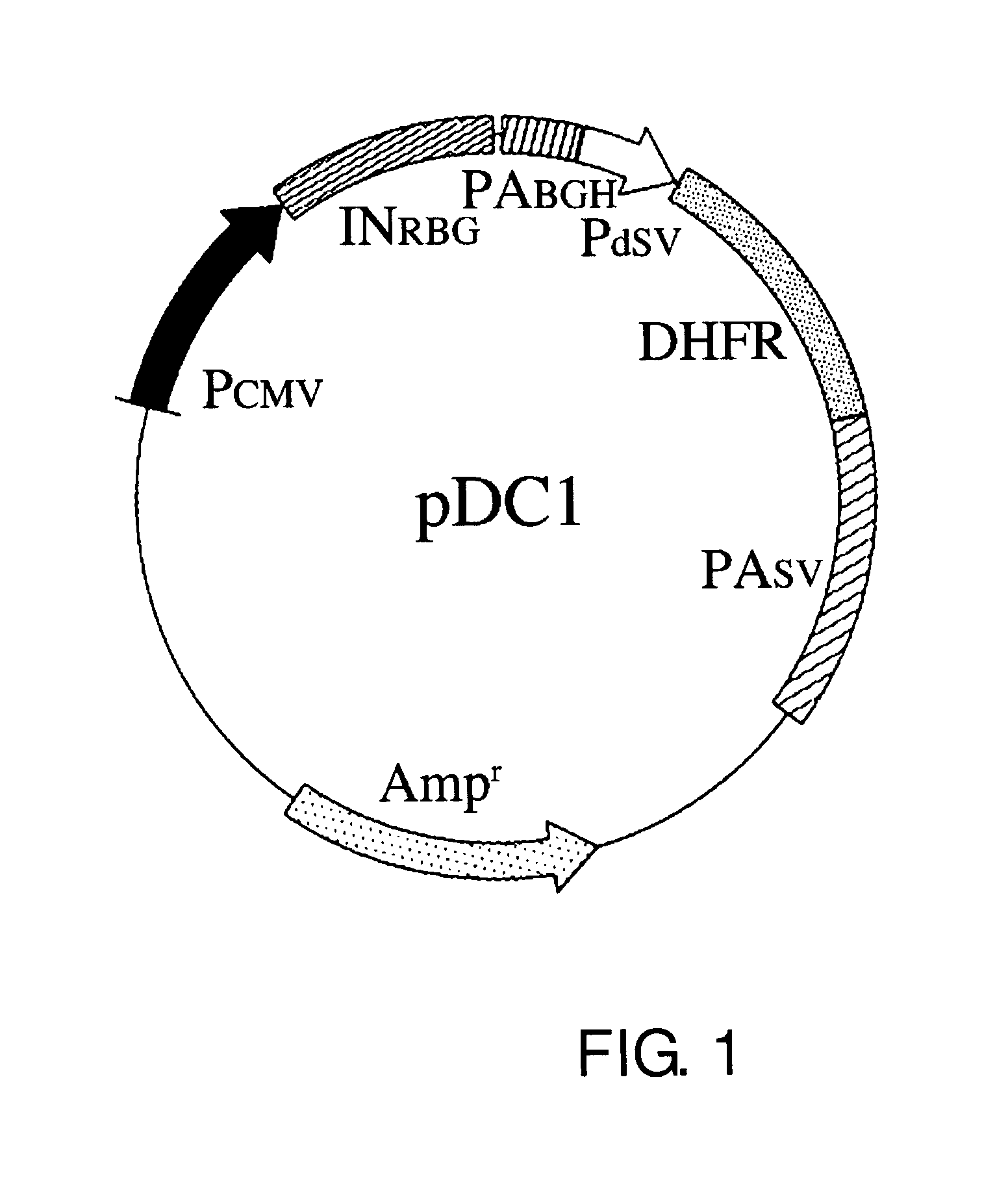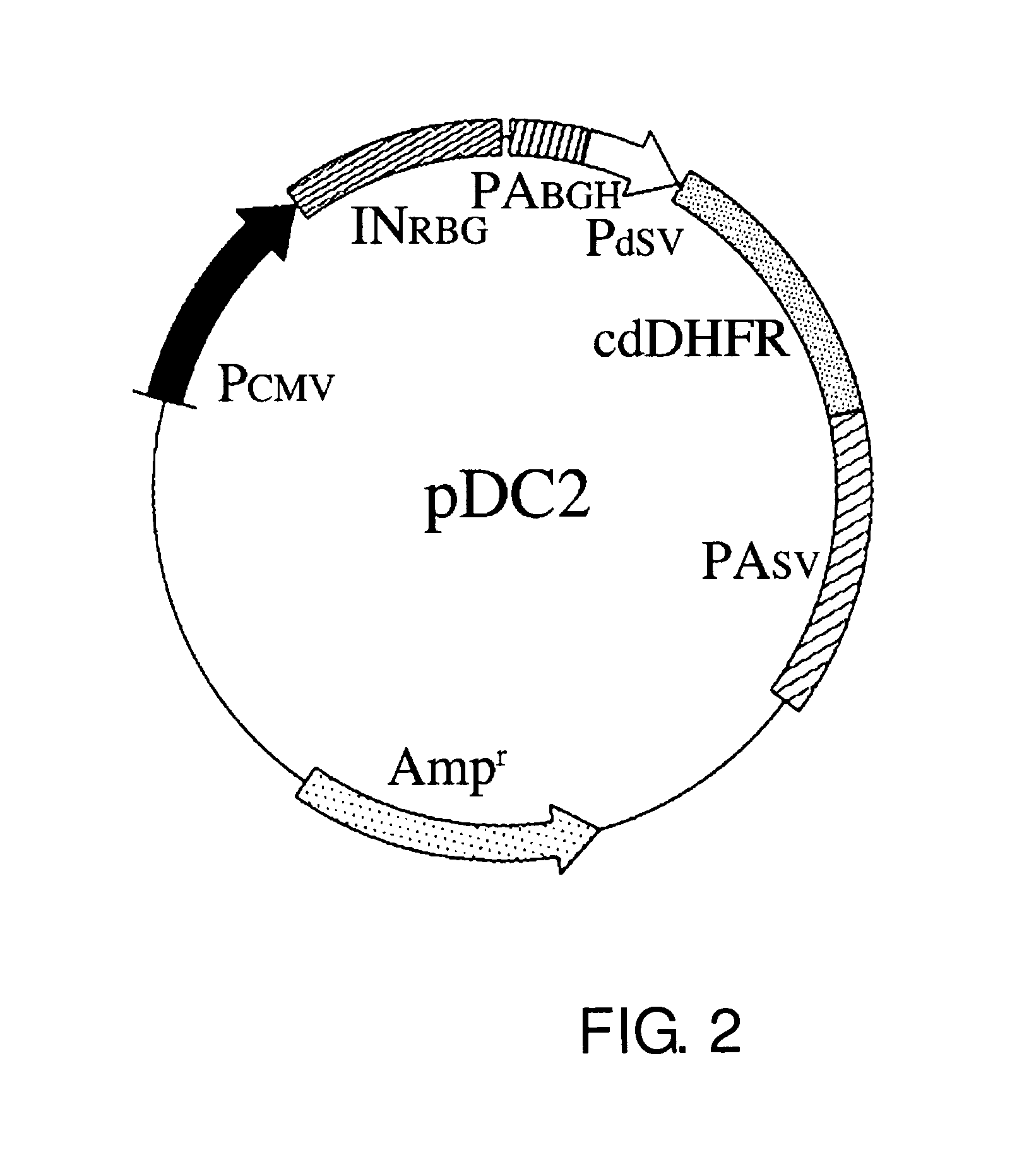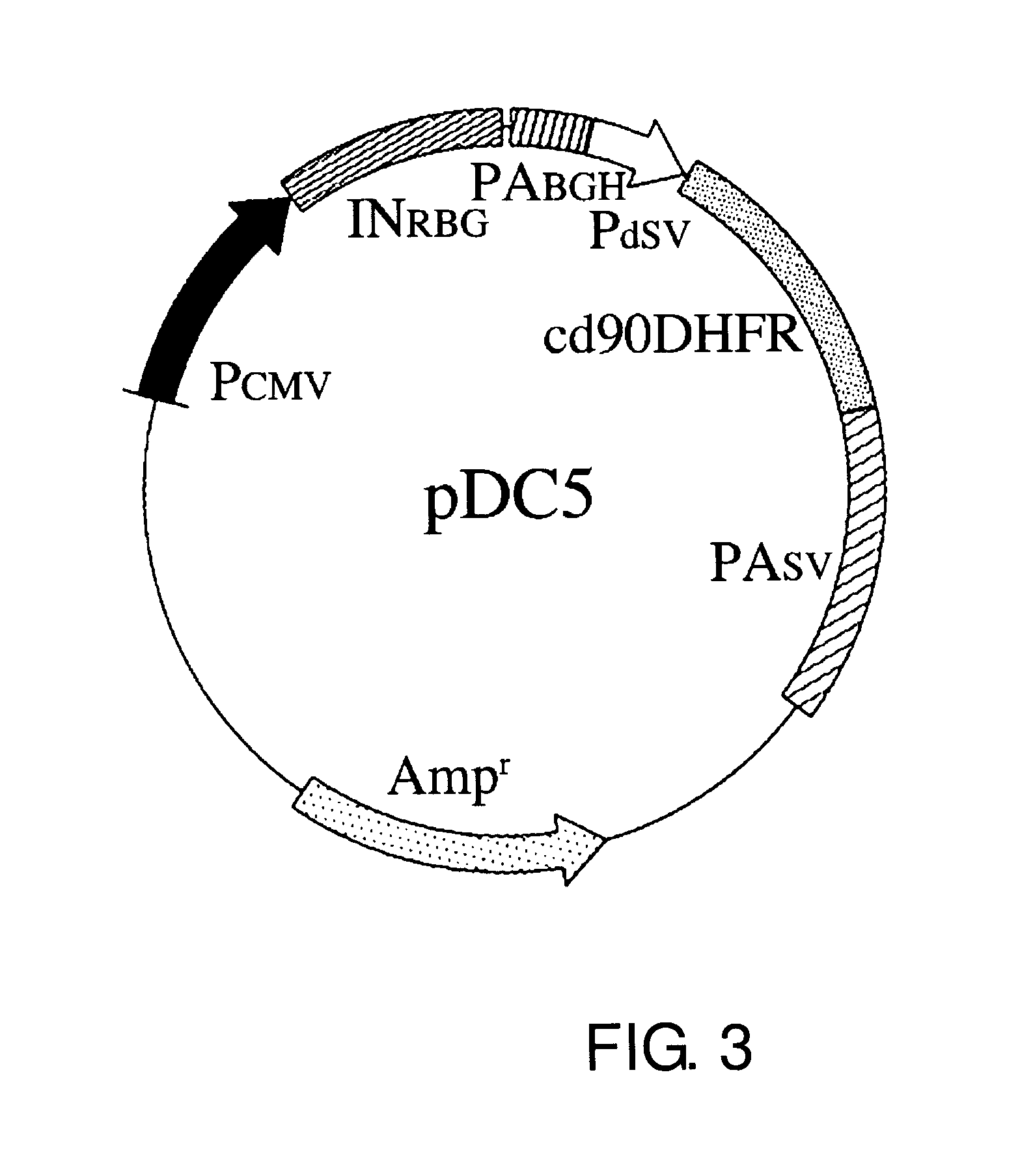Expression vector for producing protein derived from foreign gene in large quantity using animal cells, and use thereof
- Summary
- Abstract
- Description
- Claims
- Application Information
AI Technical Summary
Benefits of technology
Problems solved by technology
Method used
Image
Examples
example 1
Construction of pDC1, pDC2, pDC5, pDC6, and pDC7
[0068]Using methods well known to those skilled in the art, vectors of the present invention, pDC1, pDC2, pDC5, pDC6, and pDC7, were constructed. The entire nucleotide sequence of the backbone vector pDC1 is shown in SEQ ID NO: 1. pDC1 carries the wild-type DHFR cDNA between nucleotides No. 1784 and No. 2347 (FIG. 1). pDC2 is constructed by substituting nucleotides No. 1784 to No. 2347 in the sequence of pDC1 with the sequence of SEQ ID NO: 2. The substituted region of pDC2 is introduced with a translation-impaired DHFR gene in which the codons of the entire nucleotide sequence of DHFR have been altered to the least frequently used codons in mammals (FIG. 2).
[0069]pDC5 is constructed by substituting nucleotides No. 1784 to No. 2347 in the sequence of pDC1 with the sequence of SEQ ID NO: 3. The substituted region of pDC5 is introduced with a translation-impaired DHFR gene in which codons in the range of 90 bases from the 5′ end of the D...
example 2
Construction of pDC1 / hMBL, pDC2 / hMBL, pDC5 / hMBL, pDC6 / hMBL, and pDC7 / hMBL
[0072]Using methods well known to those skilled in the art, nucleotides No. 1267 to No. 1275 in the vectors of the present invention, pDC1, pDC2, pDC5, pDC6, and pDC7, were substituted with a cDNA encoding the human mannan-binding lectin (MBL) of SEQ ID NO: 6 (hereinafter referred to as hMBL), to construct pDC1 / hMBL (FIG. 6), pDC2 / hMBL (FIG. 7), pDC5 / hMBL (FIG. 8), pDC6 / hMBL (FIG. 9), and pDC7 / hMBL (FIG. 10).
example 3
Transfection of pDC1 / hMBL, pDC2 / hMBL, pDC5 / hMBL, pDC6 / hMBL, and pDC7 / hMBL into CHO Cells, and Selection in an HT-Free Medium Using a CD Medium or a CD Medium Supplemented with Non-Animal-Based Additives
[0073]10 μg of pDC1 / hMBL, pDC2 / hMBL, pDC5 / hMBL, pDC6 / hMBL, and pDC7 / hMBL were transfected into 500,000 CHO cells (CHO DG44 cells) in 25 cm2-culture flasks using the Lipofectin method (using Lipofectamine™ LTX; Invitrogen). Gene transfection was performed according to the manufacturer's instructions. 48 hours after gene transfection, the number of cells were counted, and then the cells were diluted in an IS CHO-CD w / Hydrolysate medium (IS Japan) supplemented with 4 mM Gluta MAX™-I (Invitrogen). The cells were plated into five 96-well microtiter plates each at concentrations of 1,000 cells / well and 100 cells / well, a total of 10 plates (960 wells), and after culturing in the presence of 5% carbon dioxide gas at 37° C. for approximately three weeks, viable cells were observed (cell lines ...
PUM
| Property | Measurement | Unit |
|---|---|---|
| Fraction | aaaaa | aaaaa |
| Volume | aaaaa | aaaaa |
| Volume | aaaaa | aaaaa |
Abstract
Description
Claims
Application Information
 Login to View More
Login to View More - R&D
- Intellectual Property
- Life Sciences
- Materials
- Tech Scout
- Unparalleled Data Quality
- Higher Quality Content
- 60% Fewer Hallucinations
Browse by: Latest US Patents, China's latest patents, Technical Efficacy Thesaurus, Application Domain, Technology Topic, Popular Technical Reports.
© 2025 PatSnap. All rights reserved.Legal|Privacy policy|Modern Slavery Act Transparency Statement|Sitemap|About US| Contact US: help@patsnap.com



